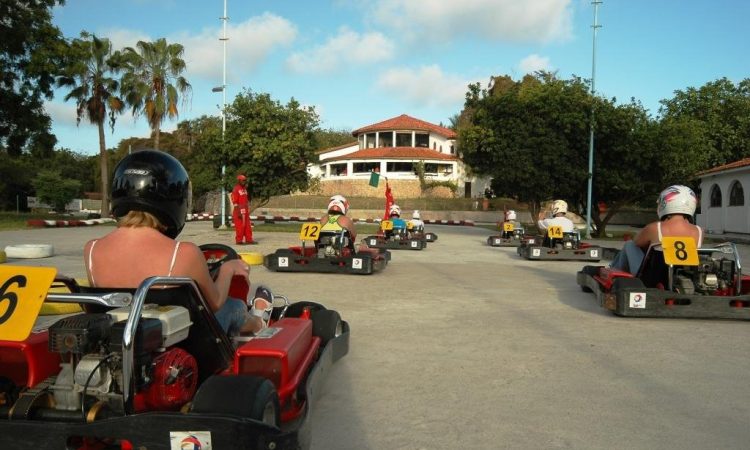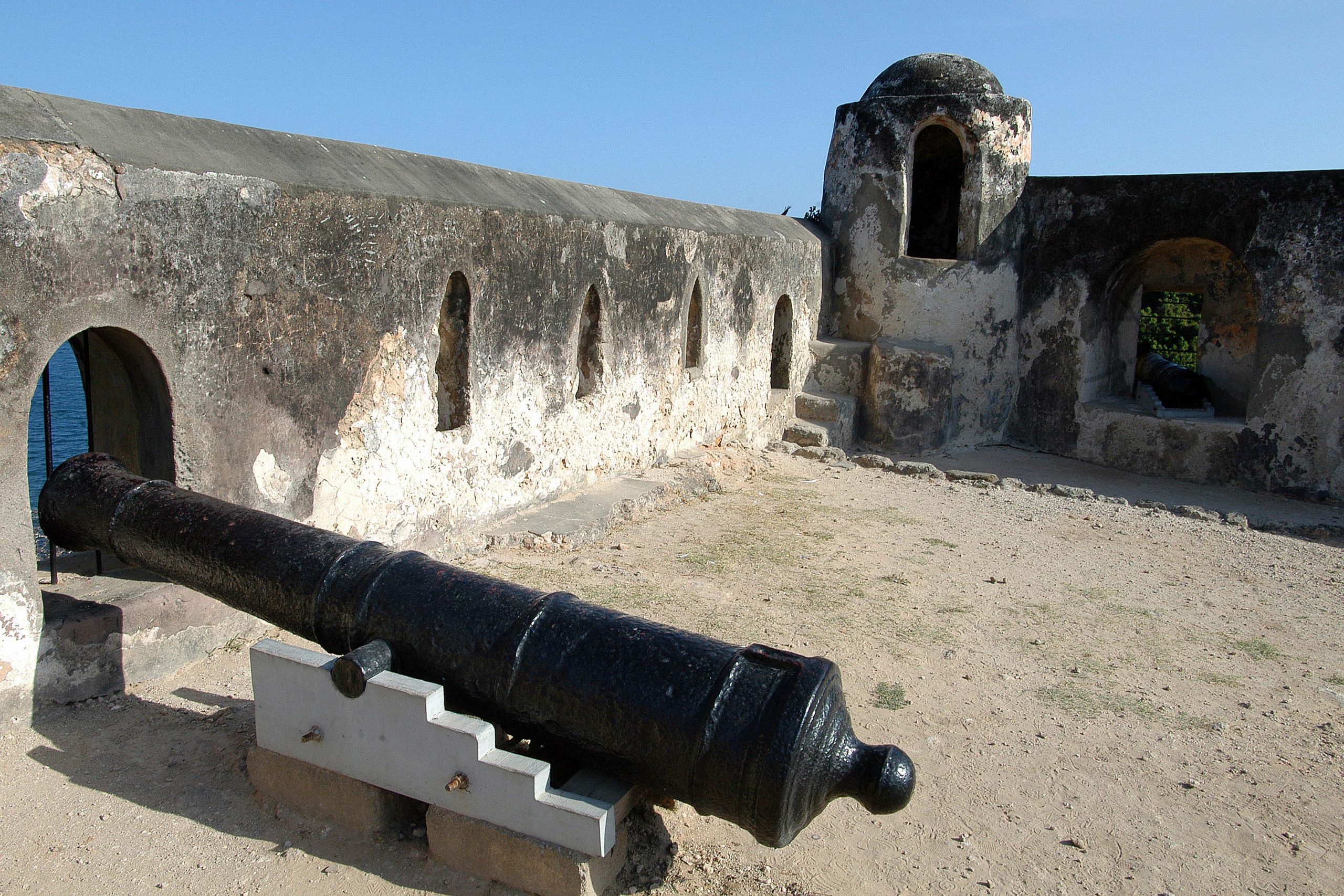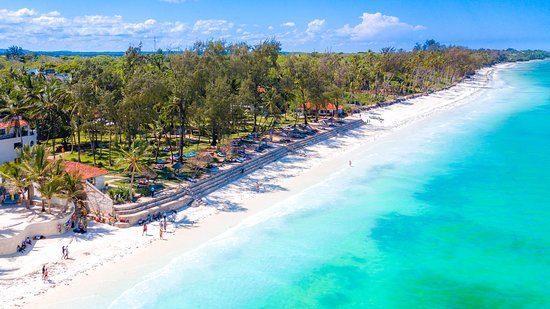Things to do in Mombasa : There are numerous tourist attract attractions and things to do in Mombasa city-Kenya’s second largest city after Nairobi. Let’s start with a little background knowledge before we get into them. The headquarters of a larger country that includes several other surrounding smaller islands, Mombasa is an island in the Indian Ocean. Mombasa is situated along Kenya’s eastern coast and is the country’s second-largest metropolis after Nairobi. At first, Mombasa was referred to as “Manbasa,” which is Arabic for “an island of conflict.” This was due to the fact that the island served as a battlefield for innumerable early settlers’ wars of occupation (Arabs, Portuguese, locals, and the British).

The Mijikenda and Swahili are the island’s indigenous populations. Because early settlers (Portuguese, Arabs, Omanis, Indians, and Chinese) on the island intermarried with locals, the Mijikenda are black while the Swahili are brown. The legacy of intermarriages includes a distinctive fusion of cultures as well as distinctive towns, mosques, and cuisines (temples, for example). Mombasa has developed into one of the economic capitals of East Africa with an international airport and one of the busiest ports in Africa as a result of its natural beauty, cultural diversity, and long history as a center of trade. Several landlocked nations in East Africa, such as Kenya, Burundi, Uganda, and the Democratic Republic of the Congo, are connected to the Indian Ocean through the port city of Mombasa.
Top destinations in Mombasa Tourists can take advantage of Mombasa’s rich maritime heritage, coral reefs, aquatic activities, seafood, architectural wonders, great hotels, and palm tree and white sand beaches. There is so much to see and do that visitors who return repeatedly only find new things each time. What are the tourist attractions and activities in Mombasa? What to see and do in your safari tours to Mombasa? Here are the top attractions to explore and things to do in Mombasa city, Kenya
- FORT JESUS
Fort Jesus, a UNESCO World Heritage Site and one of Mombasa’s most popular tourist destinations, was constructed by the Portuguese between 1593 and 1596. The building, one of the world’s best examples of Portuguese military architecture from the 16th century, was created by the Italian architect Cairati.https://www.exploretanzaniatours.com/category/kenya-safaris/
The name Jesus was given to the fort, which was constructed in the form of a man, as a clear religious allusion. Between 1631 and 1875, the fort was owned by nine different countries before it was eventually settled by the British. Fort Jesus is home to a museum that was constructed over the former garrison barracks, despite being substantially destroyed. A sizable collection of ceramics and pottery from the numerous cultures that traded along the coast is featured in the exhibits.

Within the grounds of Fort Jesus, there are numerous battlements and abandoned structures, such as the late 18th-century Omani home, which contains displays on Swahili culture and Omani jewelry. To get access to the sea, the Passage of Arches was cut through the coral.
- HALLER PARK
Animal enthusiasts like Haller Park Mombasa. This inspiring endeavor, formerly known as the Bamburi Wildlife Trail, started in 1971 when Dr. René Haller turned these deserted limestone quarries into a flourishing nature reserve.
In addition to planting trees, a fish farm, and a wildlife park where each species has a purpose within the thriving ecosystem, Dr. Haller boosted the soil’s mineral content. Giraffes, Cape buffalo, zebras, waterbucks, and hippos are among the local wildlife. The giraffe feeding is a highlight, but make sure to confirm the times before going.
The 130-year-old tortoise Mzee and the orphaned hippo Owen lived in the park along with a famous interspecies pair who went viral online. The park is teeming with birds. More than 160 species, including weaver birds, cranes, pelicans, and storks, have been introduced to the region. In addition to a reptile park, palm garden, butterfly pavilion, and crocodile pens, there are walking and cycling pathways that weave through casuarina groves.
Haller Park is just a 15-minute drive from Nguuni Wildlife Sanctuary if you want to see more wildlife. You may get up close and personal with giraffes here, as well as view ostriches, eland, Oryx, and many more bird species. It’s also one of Mombasa’s most well-liked picnic areas.
- MOMBASA MARINE NATIONAL PARK.
Mombasa Marine National Park, one of Kenya’s busiest offshore reserves, guards mangroves, seagrass meadows, sandy beaches, and coral reefs. Especially north of Mombasa, from Mtwapa Creek south to the entrance of Likoni, diving and snorkeling are popular activities.
The reserve is home to a variety of marine life, including seahorses, stingrays, and eels. The MV Dania is a well-known wreck dive in this area. You may observe the various marine species from a glass-bottom boat if you’d rather stay dry. The marine park is accessible from Nyali, Bamburi, and Shanzu, three well-known beaches.
- BEACHES ON THE NORTH COAST
Mombasa’s north coast beaches are a tad livelier than its south coast beaches. There is no shortage of tourist activity thanks to the palm-lined beaches, the beautiful waters, the coral reefs, and the abundance of water sports, resorts, and entertainment options. The resorts are also nearer to Mombasa City and the airport.
Here, the Mombasa Marine National Park borders the shore and features the best wreck diving in Kenya at the MV Dania, as well as multicolored coral gardens and drop-offs. Nyali Beach is the first destination when traveling north from Mombasa. This beach has hotels and shops lining it, and the fine white sand makes it a wonderful place to wander.
Further north, Bamburi Beach is another popular tourist destination with a variety of lodging options, including luxury resorts and beach cottages. Riding camels down the sand is one of the most well-liked activities on Bamburi Beach, as it is on many Mombasa beaches. One of the best spots to visit in Mtwapa, which is located around 15 kilometers north of Mombasa, is Shanzu Beach. Popular activities around here include scuba diving, snorkeling, sailing, and glass-bottom boat excursions.
- OLD TOWN
The Old Town on Mombasa Island’s southeast side harkens back to the time when the Portuguese governed this significant port. The majority of the town’s residents are of Arab, Asian, and European descent, and their cultures are reflected in the architecture.
Old buildings that are packed close together along the small streets have doors and balconies with elaborate carvings. History buffs can easily spend a few hours here exploring the eerie alleyways and purchasing souvenirs, spices, scented oils, and antiques. There are many restaurants and cafés in this area if you’re looking for somewhere to eat in Mombasa. Here, the harbor is overlooked by the Portuguese-built Fort Jesus, one of Mombasa’s most popular tourist destinations.
- BEACHES ON THE SOUTH COAST
The shoreline to the south of Mombasa is breathtakingly beautiful. The sun-bleached beaches are lapped by turquoise waters while vacationers lounge beneath rustling palms. Coral reefs shield the swimming areas from offshore swells, while lush rainforests teem with animals and birds aplenty. It makes sense that Mombasa’s south coast beaches are among the most well-liked destinations to hang out.
One of the most well-known Mombasa beaches is Diani Beach. Although it is the most populous and urbanized region south of Mombasa, it nevertheless has stunning beach views. European tour groups come here to take advantage of the diverse selection of water sports, which range from water skiing and parasailing to windsurfing, sailing, snorkeling, kitesurfing, and diving. Additionally, Diani Beach has a thriving nightlife.

Tiwi Beach is a good option if you’re searching for somewhere a little more tranquil. Its located 17 kilometers south of the Likoni Ferry. Here, snorkelers and sunbathers will find some picturesque vistas. One of the most romantic destinations in Mombasa is Tiwi Beach.
- MOMBASA TUSKS
You cannot fail to notice this well-known landmark in your safari tour to Mombasa, Kenya. Queen Elizabeth’s 1952 visit to Mombasa is commemorated with the Mombasa Tusks. The aluminum-built tusks serve as a landmark for the entry to the central business district, which houses the majority of the banks, stores, and marketplaces.
They make for an Instagram-worthy photo opportunity, but getting both sides will require you to first navigate the traffic on this busy road. Additionally, you’ll see that the tusks’ intersections create the letter “M” for Mombasa.
- MAMBA VILLAGE CENTRE
East Africa’s largest crocodile farm is located in Nyali in Mamba Village Centre. Learn more about these interesting amphibians’ behavior and life cycle right here. Baby crocodiles are popular among children, and many people also enjoy watching the crocodiles compete for juicy scraps during feeding time.
Additionally, horseback riding and an aquarium-equipped botanical garden are provided by Mamba Village Center. The gardens also showcase carnivorous species, although orchids and water plants are the focus. The eatery, which specializes in game meat, including crocodile, ostrich, and zebra, will appeal to carnivores.
- BOMBOLULU WORKSHOPS AND CULTURAL CENTRE.
Are you searching for items to purchase in Mombasa? At Bombolulu Workshops, you may make purchases while also supporting disabled Kenyans. This nonprofit, which has four protected workshops, a cultural center, and a café, is an initiative of the Association for the Physically Handicapped in Kenya. You can watch tribal dance performances and tour traditional Kenyan homesteads at the cultural center.
If shopping is a priority for you, stop by the workshops to buy homemade trinkets, including jewelry, clothing, wood carvings, and leather crafts. The income supports the center’s operations. Visit the restaurant to try Kenyan-inspired cuisine after seeing the grounds.
- MOMBASA GO-KART
All ages of children and speedsters love Mombasa Go-Kart. Drive go-karts around the smooth concrete track, bounce around in off-road buggies, or get excavation skills with a Bobcat excavator. You may have a snack at the kid-friendly restaurant with video games, a giant playground, and a big screen displaying sporting events after all the excitement. At night, the Go-Kart course is floodlit.
BEST TIME TO VISIT MOMBASA – MOMBASA SAFETY
In order to enjoy your time in Mombasa, it is crucial to schedule your journey and arrive at the appropriate time. Mombasa experiences both wet and dry seasons, as do all nations in East Africa. While the brief rains occur in the months of October, November, and December, the lengthy rains occur in the months of April and May.
Mombasa is best visited between July and October, when the foliage is lush and the skies are clear. January through March are the hottest months. The daytime high during the summer months can reach 32 degrees Celsius, while the nighttime low during the wet season can reach about 27 degrees Celsius.
Mombasa’s top tourist attractions and activities Prices for lodging facilities drop dramatically in the lean months of April, May, and June, and also November. Since there are more tourists during the busy season (December, January, February, July, August, September, and October), hotels and lodges charge more for rooms. It is significant to emphasize that you are always invited to visit the islands, regardless of the time of year. Because of global warming, weather patterns are also becoming more erratic. Rainfall occurs earlier or later than anticipated. Traveling in the off-season has its appeal since you may get to know the island better because there are fewer tourists around.
Mombasa: How secure is it? When visiting a strange country, every tourist needs to use caution. Consult your embassy for the most recent Mombasa security updates. There have been incidents of mugging, pickpocketing, and carjacking. You shouldn’t get paranoid as a result of this information because most travelers successfully conclude their holidays without experiencing any significant incidents. Additionally, similar security-related incidents happen in practically all nations worldwide.
To be safe, reserve a quality hotel where you believe security is a top priority. Avoid visiting public parks, the beach, and dimly lit areas at night. Avoid flashing any of your jewelry or valuables in public. If you are driving alone, make sure the car is always locked. Avoid matatus if you’re taking public transportation. Do not fight back if you find yourself the target of a mugging. To prevent something worse from happening, they should simply give up what they desire.
PACKING LIST WHEN VISITING MOMBASA.
Identification and other travel documents: A passport is usually required for international travel. When traveling, you must have a passport. At the airport, you can also be asked for proof of your yellow fever vaccination. Every hotel will need a copy of your passport as identification and to verify that you are the one who made the reservation.
Hard cash: If possible, hard currency should be in the form of physical dollars and Kenya shillings. This is crucial if you need to make transactions without using a credit card reader. Cash may also be required for unforeseen emergencies, including tip payments. Hard cash will be necessary if you are traveling to Mombasa from another East African country. Make sure to exchange part of it into local Kenyan shillings at the airport, border crossings, or any of the currency exchange offices.
Swimwear, beach sandals, and other light clothing are recommended because, despite Mombasa’s generally mild daytime temperatures, the city can get chilly at night and in the mornings. In light of this, we strongly suggest that you pack some warm clothes for your trip. You must bring swimsuits to use at the beach since you will be traveling to a region with some of the best water activities. In order to prevent blisters on your feet during the sweltering summer months, beach sandals are crucial. The colder evenings are better suited for closed-toe shoes.
Wearing sunglasses, a hat, and sunscreen will protect you from the sun’s rays as you unwind at the beach. If you’re not acclimated to the tropical climate, spending too much time in the sun without taking precautions could result in sunburns or even severe reactions.
Bring a camera and some binoculars; Mombasa is a spectacular island where you are certain to come across many intriguing objects, people, and locations. To document the moments and share them with your friends when you go home, you need a nice camera. A binocular will be useful when at the beach and while strolling along nature trails. From the security of your hotel room, you can also survey the water with your binoculars. Make sure to put your valuables in a bag, especially if you’re walking through regions you don’t feel are safe, such as the city suburbs.


